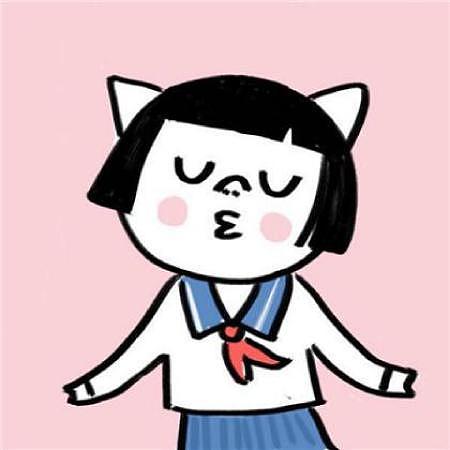《Empress Dowager Cixi》读后感摘抄

《Empress Dowager Cixi》是一本由Jung Chang著作,Knopf出版的Paperback图书,本书定价:USD 30.00,页数:464,特精心收集的读后感,希望对大家能有帮助。
《Empress Dowager Cixi》读后感(一):换个角度看历史
这本书我没有看过,本篇评论是基于Jonathan Mirsky 在2013年12月5日纽约书评上的文章 The Surprising Empress 而来。
该文章是站在外国人的立场上研究中国历史,但据作者所写,在外国人眼中,慈禧历来也是个反面历史人物。这本书是在给慈禧平反,是换个角度看历史。这一立论的出发点是积极的。历史如果只有一种维度,如果只是如同我们高中之前所学,靠的是背记历史事件和已有评论,那么历史就不成其为学问了,而只是资料而已。事实上,我在中学时学到慈禧的部分,首先是被课本忽悠得愤慨,特别是对于挪用海军资金搞寿宴,反感慈禧这个无知和落后者。进而却也反思,即使不挪用,北洋海军就能打败日本么?民间故事和电影中的慈禧,其实多数时候是可爱的,而且是有能力的。
缺少切身感受和民族体验,外国人容易转变立场,但我还是有障碍的,关键是本书的一些论点似有问题。所谓慈禧推进了中国改革,事实上是大势所趋,她只是较为开明而已。文章最后作者表示,慈禧当年给予民众言论自由和新闻自由,现在中国也还没有。确实如此,但是也要想想时代的变化。当年的言论岂有如今的感染力呢?若是以言论自由和集会自由来衡量进步,那么原始人岂不是比我们还要强?
《Empress Dowager Cixi》读后感(二):颠覆了从前对慈禧的印象!!
放了自己一个月的假期,有空就去逛书店,欣喜的发现《慈禧》这本书摆在畅销书的行列当中。不知道内地现在有这本书卖了没?因为书里面的内容好多都是颠覆我们从小历史书的观点。
书中描述了慈禧,用现代话语来讲,她是一个女强人,她拥有非常开阔的思维,乐于学习西方的先进知识。清朝后期的发展,其实都是来自她的。慈禧非常同意“落后就要挨到”这个说法。她派遣中国使者、学生出使西方,了解西方,学习西方知识。重用外国能人,塑造新中国的关税已经近代海军。
不过最让我觉得颠覆我以前一直从历史书学到的,对慈禧的印象。
1. 历史书说慈禧利用建设北洋军阀的钱来为自己重建颐和园,其实慈禧根本只是动用了每年批给北洋军阀几百万两中的30万,然后还在自己的积蓄里面拿出300万。而普遍的说法是颐和园重建耗费了数千万两,而根据外国代表团史载,维修颐和园总共才用了5、6百两。
2. 很多人认为慈禧是导致中国未能沿用西方先进的议会制度的始作俑者。而实际是,当康有为梁启超向慈禧、光绪推荐西方议会思想时,慈禧是非常赞同。但后来发生了刺死戊戌六子的原因是康有为想密谋暗杀慈禧,慈禧出于自保和维护皇帝声望,不得不刺杀戊戌六子。自慈禧以来,大家对慈禧不好的看法,当中很多都是因为受到逃跑到日本的康有为在采访,演说及著作里面不遗余力的制造对慈禧的不实之词。
3. 在面对俄国、日本、法国的侵略,要求割让中国领土时,特别是光绪皇帝主持签订马关条约时,慈禧都是一再主张拒绝割让领土的。
书看完了,我对慈禧的印象完全改观。慈禧是受尊重的,她发动政变,改变了中国的命运,让中国接触到现代文明。同时她也是可悲的,她虽然是皇太后,但毕竟她是一名女子,即使她再聪明有权利,她还是受制于中国的传统封建思想。
非常感谢作者张戎对历史真实的考究,还了慈禧一个公道,也为后人要看清楚多方面的事实,不听一面之词做了榜样。
《Empress Dowager Cixi》读后感(三):Mark C.Elliott 教授对本书的评论
What’s New About the Empress?
Mark C. Elliott, reply by Jonathan Mirsky
In response to:
The Surprising Empress from the December 5, 2013 issue
To the Editors:
Permit me to offer two points relating to Jonathan Mirsky’s review of Jung Chang’s Empress Dowager Cixi: The Concubine Who Launched Modern China [NYR, December 5, 2013].
First, Chang is correct to say that by the end of the Qing, few Manchus still spoke the Manchu language in daily life. Use of the language was confined mainly to writing court documents. That does not mean Manchu identity had disappeared—as Mirsky points out, recent scholarship shows it had not—but by the late nineteenth century the language was not part of what made Manchus “Manchu” anymore.
Second, on sources. In the introduction to the book, Chang says that most of her materials “have never been seen or used outside the Chinese-speaking world,” and in remarks at the Hong Kong Press Club, Chang referred to “the Beijing archival material to which she unexpectedly gained access.”1 The suggestion behind these statements is that the materials used in the book represent new discoveries.
By definition, of course, a source in Chinese will be inaccessible to anyone “outside the Chinese-speaking world” unless it has been translated. Since none of the document collections she uses has been translated into English or any other language, what Chang says is true, strictly speaking. But they are far from new sources. As far as I can determine, the primary sources listed in the bibliography consist of published materials available in any major research library. The ten items listed under “First Historical Archives of China,” for instance, very frequently cited in the footnotes, are all owned by the Harvard-Yenching Library. That is to say, contrary to Chang’s suggestions, the documents that underpin her study have long been available to anyone who has been trained in Chinese history and can read Chinese.
Whether Chang was given special access to collections in the First Historical Archives is harder to say. If she was, there is little evidence of this in the book. Among the documents cited, only three are identified according to provenance in an unpublished archival holding. So there does not seem to be any reason to believe her work depends upon some previously hidden store of materials.2
As for the claim of analytical novelty, I doubt her interpretation of “Cixi the reformer” will surprise many Qing specialists. Rhoads, for one, refers to Cixi’s push for change in the dynasty’s last decade, and in her 1975 dissertation (which escaped Chang’s attention), Sue Fawn Chung also discussed the empress’s steps toward reform.3
Perhaps the most interesting angle on this book—and Mirsky points to this in his final paragraph—is that it slots neatly into the preoccupation among many intellectuals today about the parallels between the current period of reform and that of 1898–1911, when Cixi was in power. China’s leaders seem to be looking back and asking, What is the right pace for reform? How much is enough? How to avoid the fate of the Qing, which reformed itself out of existence?
Mark C. Elliott
Director
Fairbank Center for Chinese Studies
Harvard University
Cambridge, Massachusetts
Jonathan Mirsky replies:
Mr. Elliott has amplified clearly the points I was trying to make.
1
Keith Bradsher, “Another Look at the Empress Dowager Cixi, This Time as the Great Modernizer,” The New York Times, October 30, 2013. ↩
2
This is probably also as good a place as any to correct the mistaken impression, repeated by Mirsky, that there are 12 million documents pertaining to Cixi in the Chinese archives. This is the approximate number of documents in all the Qing archives (the usual figure seen is 10 million), of which approximately one fifth are in the Manchu language. ↩
3
Sue Fawn Chung, “The Much-Maligned Empress Dowager: A Revisionist Study of the Empress Dowager Tz’u-Hsi in the Period 1898–1900,” University of California Berkeley Ph.D. dissertation, 1975. ↩
-
《慈禧垂帘:祺祥政变始末》读后《慈禧垂帘:祺祥政变始末》是一本由王开玺著作,东方出版社出版的2014-4图书,本书定价:35.00元,页数:,特精心2023-03-29阅读全文
-
《慈禧回銮》读后感摘抄《慈禧回銮》是一本由杨红林著作,三联书店出版的平装图书,本书定价:36.00,页数:196,特精心收集的读后感,希2023-01-22阅读全文
-
慈禧全传读后感精选《慈禧全传》是一本由高阳著作,新星出版社出版的平装图书,本书定价:398.00元,页数:3768,特精心收集的读后感2023-03-10阅读全文
-
《我和慈禧太后》的读后感大全《我和慈禧太后》是一本由[美]德龄著作,译林出版社出版的平装图书,本书定价:29.80元,页数:352,特精心收集的2023-03-13阅读全文
-
慈禧读后感1000字《慈禧》是一本由張戎著作,麥田出版的平装图书,本书定价:NT$450,页数:432,特精心收集的读后感,希望对大家2023-03-24阅读全文
-
The Moment of Lift: How Empowering Women《The Moment of Lift: How Empowering Women Changes the World》是一本由Melinda Gates著作,Flatiron Books出版的精装图书,本书定价:2022-11-29阅读全文
-
《How Adam Smith Can Change Your Life》读《How Adam Smith Can Change Your Life》是一本由Russ Roberts著作,Portfolio出版的Hardcover图书,本书定价:USD 27.95,页数:272,特2023-03-17阅读全文
-
How to Change Your Mind经典读后感有感《How to Change Your Mind》是一本由Michael Pollan著作,Penguin Group USA出版的Audio CD图书,本书定价:USD 28.00,页数:480,特精2022-12-19阅读全文
-
《The Life-Changing Magic of Tidying Up》《The Life-Changing Magic of Tidying Up》是一本由Marie Kondo著作,Ten Speed Press出版的Hardcover图书,本书定价:USD 16.99,页数:2023-03-16阅读全文
-
How I’ve changed通用作文作文是通过文字来表达一个主题意义的记叙方法。那么你有了解过作文吗?How I’ve changed通用作文,欢迎阅读与收藏2023-02-21阅读全文











